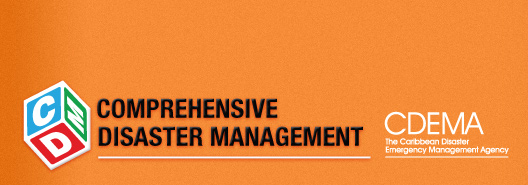
| Landslides |
|
What is a landslide? When rocks, earth, or debris move down a slope due to gravity, this is called a landslide. Landslides are a type of mass movement and can so small that they aren’t even noticed. On the other hand, they can be so big that they destroy the entire side of a mountain. How do they happen? Landslides can happen on any terrain given the right type of soil, moisture conditions and the angle of slope. Most of the time, they are triggered by too much water. The majority of landslides and mudflows have occurred after several hours or even several days of heavy rain. All of this water makes the rocks and sediment separate and move down the slope rapidly. The resulting flow of rock and mud may pick up trees, houses and cars. It can block bridges and rivers which will cause flooding along its path. As a slide moves down a mountain slope, it can pick up a lot of speed and energy. Some slides have been said to travel at almost 200 miles per hour! Landslides can also be caused by natural hazards. Of course, hurricanes come with heavy rains but did you know that volcanoes and earthquakes can also cause landslides? Earthquakes can destabilize slopes if the shaking is strong enough to break the bonds holding the rocks and sediments together. Once these bonds are broken, there is nothing stopping the debris from moving down the slope. The surface of a volcano is made up of loose rocks (from previous eruptions) which are easily moved during heavy rainfall. During an eruption, pyroclastic flows and lahars travel down the volcano and are incredibly destructive. In colder places, volcanoes can heat ice on a volcano’s surface and cause the water to flow along the slope, gathering debris as it goes. Human beings do contribute to landslides as well – by weakening the bonds holding the soil together through construction and agriculture. Are you at risk? Landslides are more widespread than any other geological event. Here’s a list that shows what makes you vulnerable to landslides. You can use this to determine whether or not your home and community are in danger.
Did you know? Issues The May 1980 eruption of Mount St. Helens in the United States caused one of the largest landslides in history. It moved at 155 miles per hour and travelled about 22.5 kilometres, destroying highway bridges, numerous private and public buildings, and many miles of highways, roads, and railroads. In the Caribbean, landslides are a common problem. Many of our islands were shaped by millions of years of mass movement and these are still going on today. Our volcanic islands, wet and warm climate and the presence of clay in our soils make us very vulnerable to landslides. A landslide may cause acres of property damage and cause buildings and homes to be destroyed. They can also lead to other dangers such as broken electrical,water, gas, and sewage lines, and the disruption of roadways and railways. Destroyed or damaged infrastructure is another problem of landslides. The clearance of debris and repair of damage are the main impacts to roads. On the narrow roads often found in the Caribbean, it does not take a large landslide to create a major impact. There is also the destruction of crops to consider. Losses of bananas to landslides on St. Lucia and St. Vincent yield losses of $250 to $4000 for individual farmers. This adds up to major losses for a small island’s economy. The effects of landslides and other kinds of mass movement are made worse by land mismanagement. In many Caribbean islands there aren’t mandatory building regulations. This means many persons just build their homes and business anywhere they want to – including dangerous landslide prone areas. Land-use zoning, professional inspections and proper building design can reduce many of the problems associated with mass movement. History 1. When? November 12, 1986 Where Dominica Aftermath Nearly 17,000 cubic meters of soil and rock slid from the hill above the Castle Bruce-Petit The landslide moved quickly and destroyed citrus trees and vegetable crops growing The impact also destroyed a primary school before finally depositing material almost 4 Between 1925 and 1986, twenty-five people have lost their lives because of landslides 2. When? September, 2007 Where Trinidad and Tobago Aftermath Heavy rainfall from Tropical Storm Felix caused landslides in parts of North Trinidad. |
|
Looking for:
|











